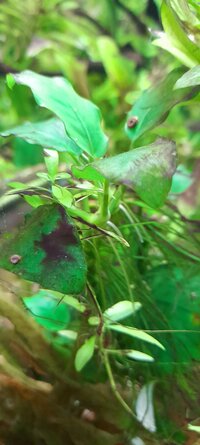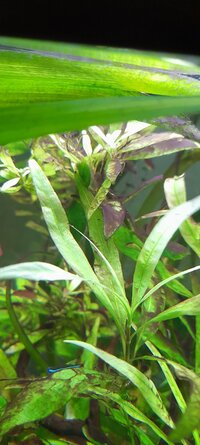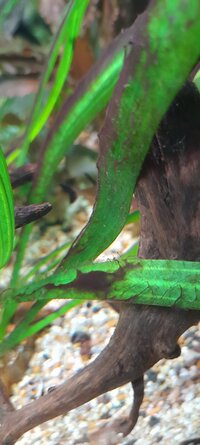Any additional thoughts on this
@jaypeecee
For what it's worth I smelt cyano a couple of times in a tank I completely rescaped back in July, but it eventually dissipated so I ignored it - however I now note pretty obvious green slim in front sand substrate - only visible from front, not on surface of substrate and no obvious smell.
Anecdotal thoughts:
With very few exceptions I have kept my tanks in very hard water and have never experienced cyanobacteria;
This is my first time in consistently amending my water with RO and the first time I've seen cyanobacteria;
The front sand substrate was probably OD with JBL Fereopol Root (perhaps ties in to your comment on iron);
While finding RO sweet spot I noticed the cyanobacteria smell mostly in the days after heavier RO use i.e. softer water seemed to exhaserbate it;
I cannot disregard light as I upgraded to a WRGB2 Pro, light has however been reduced for some time and I may reduce further;
Co2 injection, flow and light now more aligned and despite the visible cyanobacteria at front sand section it has not progressed further from the initial smell months ago;
I'm currently [last four days] using 5ml 6% H2O2 injected directly into the effected substrate, little bit in multiple sections (injected deeply with fine non-sharp needle) every morning, has not impacted filter and all inhabitants snails, shrimp and fish are fine - this includes shrimp and snails subsequently grazing over effected area (which will bubble) - this does seem to be clearing the treated areas but too early to tell;
I also had BBA issues in this tank, prior to me noting the visible BGA, that seem to be subsiding now - part of my thought process on BBA was the classic reduce organic matter, maintaince, good CO2 distribution and flow, and frequent large water changes, however I can't help but think all of these also clear Ammonia even if at unmeasurable levels, therefore I went all out NO Ammonia which included all of these things plus morning and night doses of Seachem Amguard;
I also dose 20ml Algexit (Salicylic acid) once weekly - I have read up on this as I know you have. I have also used it previously to no effect - however whether it is different parameters in my tank this time or the other factors I saw clumps of [black] BBA cleaving off into the water column days after treatment [I do not believe this is BBA life cycle as I've always suffered BBA in this tank under different set ups and never observed similar, though I have had visible die off (pink/white) only for it to later return. Historically BBA only ever went when the tank was left to it's own devices, low tech, infrequent water changes no dosing - ran fine like that albeit with limited plant Sp. doing well [CO2 no doubt playing a part here];
I tried both Excel and APT Fix (latter would be my preference when it comes to livestock) but neither had a meaningful effect though I would not OD them and am not comfortable using them at all TBH;
Dosing is probably EI+ I tried reducing but it didn't help BBA and plants did worse;
I have EVERYTHING usually used for BGA at my disposal, however I am reluctant to dose the water column with many of them so will be limiting my efforts to treating effected area only at the moment.
I'll keep you posted but just wondered if you had any additional thoughts.
Mat





